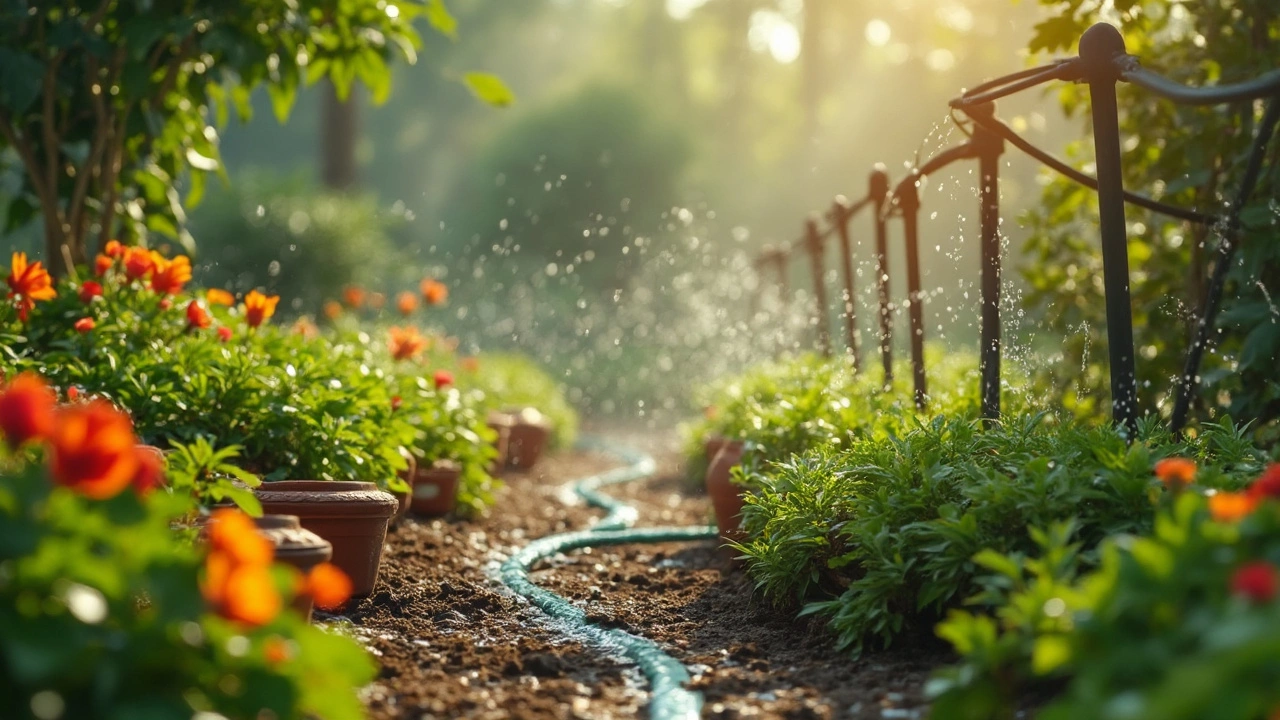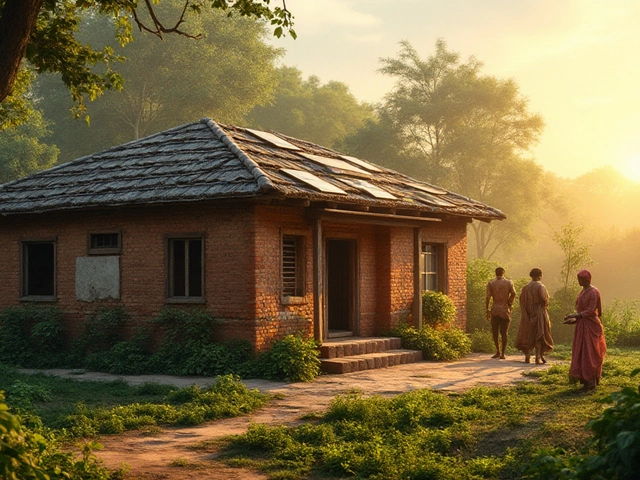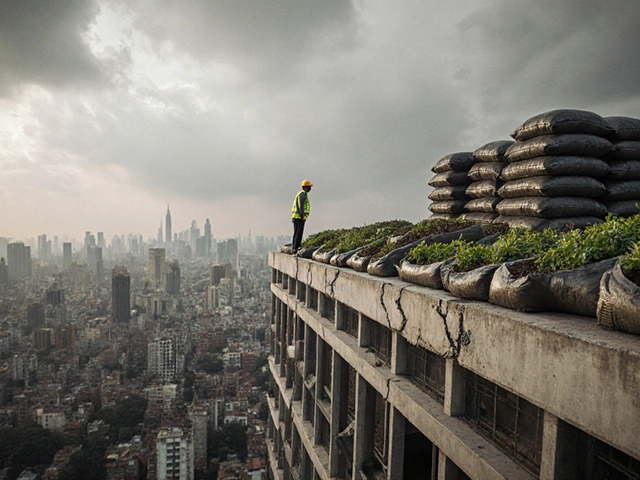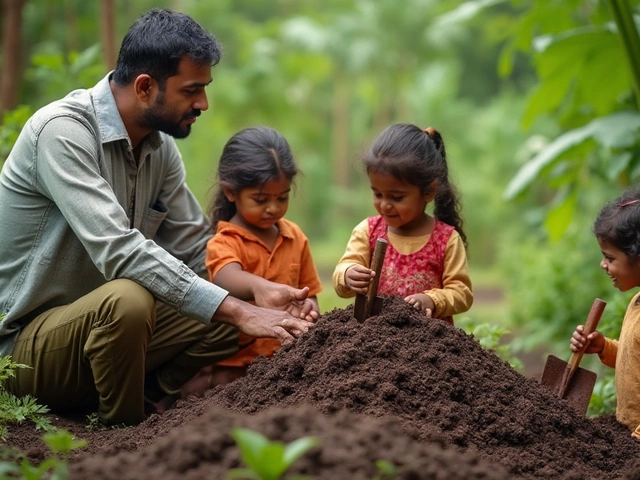So, you've got a drip irrigation system set up, and you're wondering just how much water should be dripping out of those lines. It's a smart question because too much or too little water can make a big difference in how your plants grow. First off, let's talk about flow rates. Typically, a drip line should deliver between 0.5 to 4 gallons per hour (GPH) per emitter. This range is pretty standard in most setups, but you might need to tweak it depending on what you're growing.
Alright, but why does flow rate matter? Well, think about it: different plants need different amounts of water. A tomato plant isn't going to have the same thirst as a cactus, right? So, you'll want to adjust your system to match your plant's needs. Sounds tricky? It's really not. You can start by looking at the emitter's specs and seeing how much each puts out. From there, you match it to your plants' requirements.
Understanding Flow Rates
Getting your head around flow rates is a big deal when you're working with a drip irrigation system. Simply put, flow rate tells you how much water each emitter delivers over a certain period. Pretty neat, right? But it's more than just a number. Understanding this helps you figure out how deep the water goes into the soil and how well it meets your plants' needs.
Here's a quick guide: most drip lines pump out between 0.5 to 4 gallons per hour (GPH) per emitter. That's kind of the sweet spot for most gardens and landscapes. But if your plants prefer less water, like succulents or certain herbs, you might lean toward the lower end of that scale. Got water-hungry tomatoes or peppers? Then you might push closer to 4 GPH.
So, how do you check your flow rate? Grab a container and a stopwatch. Let the system run into the container for one hour. Measure the water collected in gallons, and bingo, there's your flow rate! Make sure to check all over your system because things like water pressure and height differences can make emitters flow differently.
Now, a crucial part of this is understanding the impact of your soil type. Some soils, like clay, don't need as much water at once because they hold onto moisture better. Sandy soils drain fast, so they might benefit from a bit more water over the same period.
The kicker is getting your drip irrigation system to match the flow needed for your garden's specific setup. It's a balance, but getting it right pays off with healthier plants and more effective water use.
Matching Water to Plants
Getting the right amount of water to each plant with drip irrigation is like playing matchmaker, but for your garden. Each plant species has its own water needs, and hitting the sweet spot is key to keeping them healthy and productive. Let’s dive into how you can tailor your system to meet those needs.
Start by identifying the water requirements of your plants. Most plant labels provide this info, but as a quick reference: veggies typically need about 1 to 1.5 inches of water per week, while drought-tolerant plants like succulents might only need a tiny fraction of that. Analyze your drip line water output and see if it aligns with these needs.
Consider grouping plants with similar water requirements together, which makes it easier to manage them and ensure they're not over or under-watered. Use adjustable emitters if you have mixed plant zones; these allow you to control the flow rate according to each plant’s thirstiness.
- Tomato plants (very thirsty): Aim for 1.5 inches of water per week using emitters that deliver a higher flow rate.
- Herbs (moderate): Use a moderate flow rate and check the soil moisture regularly.
- Succulents (low): Keep it minimal. Use emitters that release water once or twice a week, depending on the climate.
Also, think about the root depth of your plants. Shallow-rooted plants need more frequent watering as they dry out faster, while deep-rooted plants can draw moisture from deeper soil layers, requiring less frequent watering. All these elements help you fine-tune your irrigation systems for optimal growth.
Here's a little bonus tip: use a soil moisture meter to keep tabs on how wet the soil is getting. These handy tools can help you make better decisions about adjusting your watering schedule and flow rates.
Lastly, here’s some handy data you might appreciate:
| Plant Type | Weekly Water Requirement | Recommended Emitter GPH |
|---|---|---|
| Vegetables | 1-1.5 inches | 2-4 GPH |
| Herbs | 0.5-1 inch | 1-2 GPH |
| Succulents | 0.25-0.5 inch | 0.5-1 GPH |
Keep tweaking and observing. With some attention and a little tweaking, your drip irrigation system will keep your plants happy and your water bill low.
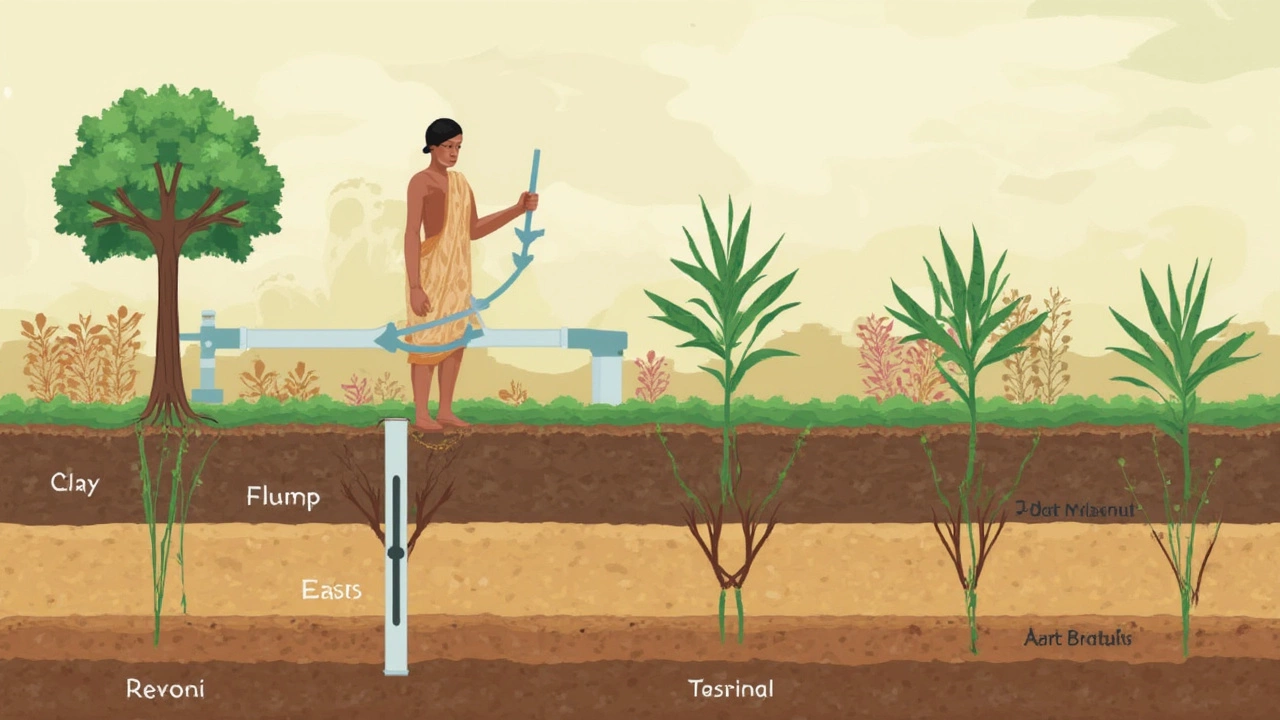
Soil and Weather Impact
Ever wondered why your plants seem to do better after a good rain than with just your trusty drip irrigation system? It might be down to the magical combo of soil and weather!
First things first, let's talk soil. Different types of soil have different abilities to hold and transfer water. If you've got clay soil, it holds onto water like a sponge—slowly absorbing and slowly releasing it. On the other hand, sandy soil is more like a sieve, with water rushing through in no time. Knowing your soil type is key because it affects how much and how often you should water your plants.Drip irrigation setups should be adjusted for these differences. Clay soils might need shorter drips, while sandy soils could require longer or more frequent watering to keep plants happy.
Then there's weather. Rainfall can dramatically alter your watering needs. A good rule of thumb is to dial back the drip after heavy rain; your plants won’t need that extra moisture, and it could actually harm them if they get waterlogged. Hot and windy days, on the other hand, might mean cranking up that water flow a bit since plants can lose more water through their leaves.
Neat fact: did you know some modern drip systems come with weather sensors? These units can adjust water flow automatically based on the local weather forecast, making sure your garden doesn't get too thirsty or too drenched.
| Soil Type | Water Retention |
|---|---|
| Clay | High |
| Sandy | Low |
| Loamy | Moderate |
By pairing your drip irrigation strategy with a keen eye on soil and weather conditions, you can fine-tune your watering to give plants just what they need. Remember, both soil and weather are as important as the plants themselves for a thriving garden.
Optimizing Drip Systems
Alright, eager to get the most out of your drip irrigation setup? Let's make those lines sing! Optimizing is all about efficiency and making sure every drop counts. First, check your setup regularly. Over time, emitters can clog or wear out. A quick inspection now and then can save you from future headaches and sad looking plants.
Did you know a properly set up system can save you up to 50% on water compared to traditional sprinkler systems? That's right, and in places with water restrictions, that's a big deal. According to the National Resources Conservation Service, "A well-maintained drip system can lead to better plant health and significant water savings."
One simple upgrade is to install a pressure regulator. Faucets might deliver between 40 to 60 psi, but most drip systems work best around 20 psi. Too much pressure can lead to busted emitters and uneven watering.
Consider zoning your garden. Group plants with similar watering needs on the same line. This ensures your thirsty tomatoes and drought-tolerant herbs get just the right amount.
- Use timers. They prevent over-watering and make life easier. You set it, forget it, and enjoy the growth.
- Mulch around your plants. It reduces evaporation, meaning your system works less, saving even more water.
- Check for leaks. Little leaks can add up to lots of wasted water. Just a quick walk through with a keen eye can make all the difference.
And don’t skimp on quality parts. It might be tempting to go for the cheapest options, but reliable tubing and emitters are worth the few extra bucks in the long haul. A little investment now ensures you won’t be fiddling with replacements all season long.
